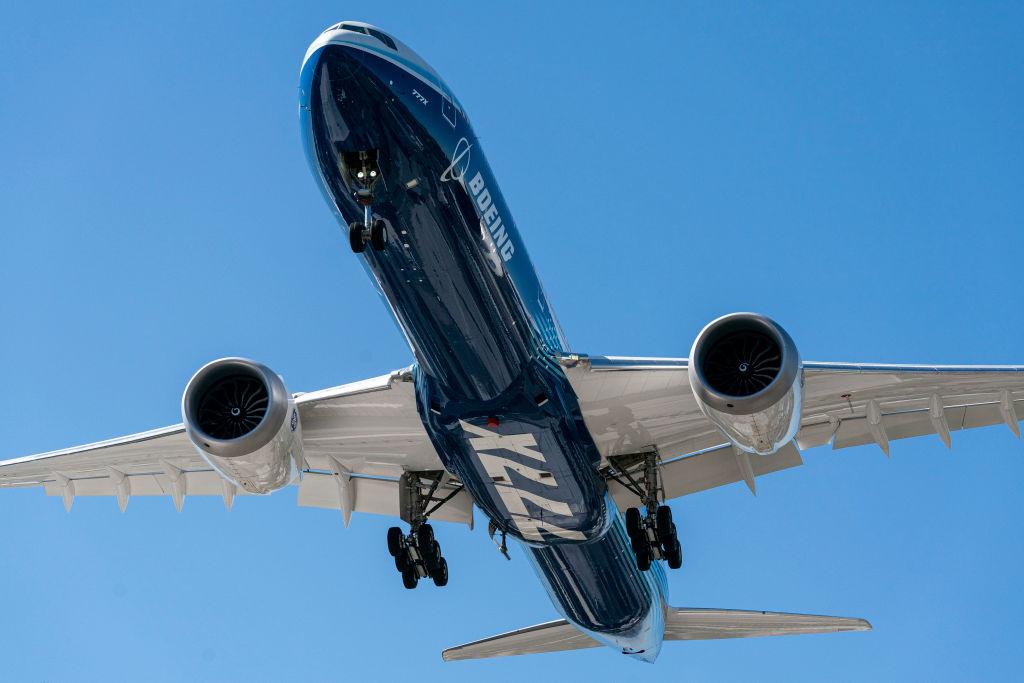
DUBAI—Although Boeing is not yet ready to announce the launch of the proposed freighter version of the 777X, the company says “demand is sticking its head up and it’s looking pretty good.”
Speaking on the eve of the Dubai Airshow, Ihssane Mounir, senior vice president of Boeing Commercial Airplanes, Commercial Sales and Marketing, says: “We are in advanced discussions with a number of customers and the airplane looks good from a design and requirements standpoint.”
The manufacturer has made no secret of its plans to develop the freighter version of the 777X, the first 777-9 passenger model of which is due to enter service in late 2023. However, the timing of the launch of the freighter model remains unknown, as does the go-ahead for the follow-on 777-8 variant.
Mounir says Boeing airlines in the Middle East region will be briefed this week on progress with flight tests of the 777-9, design progress on the 777XF and updates on the 777-8. The latter comment is particularly aimed at Tim Clark, Emirates’ president, who has been vocal in his criticism of the manufacturer and its lack of clarity on plans for development of the smaller 777X family member.
Mounir meanwhile says the four 777X flight test aircraft have accumulated 1,700 hours over 600 flights. Boeing continues company tests in advance of the start of certification work which will only begin when the FAA awards Type Inspection Authorization (TIA) to the manufacturer. Although this was widely expected in late 2020, TIA was delayed pending design and regulatory reviews in the wake of the grounding of the 737MAX and a flight-test incident on the 777-9.
Debuting at an international event for the first time, Boeing’s 777X is making headlines at this year’s Dubai Airshow—but not for the reasons the U.S. manufacturer could have imagined when the world’s biggest twinjet was triumphantly launched amid record orders at the same show eight years ago.
Instead of marking almost two years in service—as would have been expected had the program stayed on the original schedule laid out in 2013—Boeing is approaching the show still awaiting the FAA’s TIA approval.
However, amid the unprecedented market turmoil and program delays, there are at least four silver linings for Boeing going into the show. The first—and most obvious—is that the devastating impact of the pandemic on international air traffic means that even if the 777X had been close to its original plan, few, if any, of the original customers would have been able to put the aircraft into service.
The company’s January 2021 announcement of a $6.5 billion charge associated with the 777X delays was part of a painful but necessary adjustment aimed at limiting midterm damage and fostering longer-term recovery. Senior Boeing sources say the additional time was added “very deliberately” and gives margin for not only a global market recovery but also for adjusting to the new regulatory environment.
The task of certifying the 777X is seen within Boeing as a key chance to reestablish trust with the FAA, European Union Aviation Safety Agency (EASA) and other regulators around the world. The manufacturer wants the FAA to reestablish its role as an international regulatory leader and stabilize bilateral regulatory behavior around the world. The 777X “is really that opportunity,” the Boeing sources say, because the aircraft will be certified under EASA’s changed product rules, with exemptions and harmonization with that agency. Getting this process functioning again is seen as critical not just to Boeing but to the commercial aerospace industry writ large.
Second, the large-scale premature retirement of many flagship fleets of 747-400s, Airbus A380s and a smaller number of A340s because of the pandemic means the expected longer-term replacement cycle for which the 777X was designed has already been primed. Though new orders may be months or years away, the company’s market forecasters are bullish on prospects for this sector.
Third, while TIA has yet to be approved for even a phased certification test program, Boeing has continued its own test effort with a busy flight campaign involving the first four development aircraft. Most notably, it began crucial cruise fuel-burn—or NAMS (nautical air miles survey)—testing, and senior company officials say the initial results are better than expected.
The FAA is telling Boeing to “get your house in order before we run this test—‘Boeing do this before we do that,’” Boeing CEO David Calhoun says. “And we have stuck to that discipline, and that was all part of the original plan and the timing for [first delivery in the] fourth quarter of 2023. We’re still on that plan. Nothing at this moment in time has suggested that the plan isn’t still workable.” In flight tests, he adds that results so far support the proposed timeline, and no showstoppers have cropped up to date. “If ever there was going to be a ‘gotcha,’ that’s where it would be,” he remarks.
In addition, the company is using the extra time to transition production of the 777X from the low-rate initial production (LRIP) line at Everett, Washington, to the main line, which has been making the first few non-LRIP 777-9s or 777F freighters since the middle of 2021. Demand for those models has forced Boeing to add extra positions. Thanks to the uptick in freighter production, the combined output of 777F/777X aircraft has stabilized at around two per month, the lion’s share being the cargo aircraft.
And it is this booming air cargo market that represents Boeing’s fourth 777X silver lining. Largely as a consequence of the pandemic, Boeing has accelerated plans for a freighter version of the 777X—a move that traditionally comes years into the production life of passenger versions rather than years before the initial model has even entered certification testing—let alone made its airline service debut.
Moreover, Airbus is entering the large-freighter arena with the A350-950F, a new cargo derivative sized between the A350-900 and the -1000 to take on the 777F market. This is undoubtedly adding momentum to any pending launch decision.
